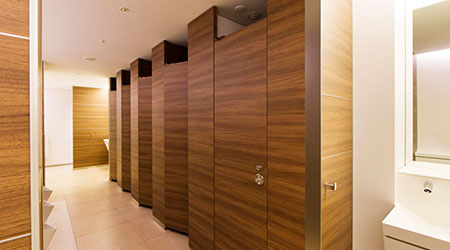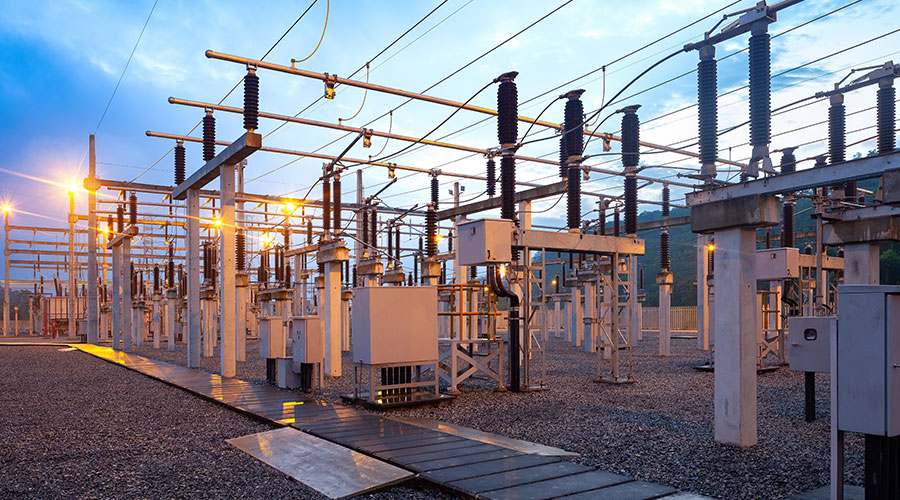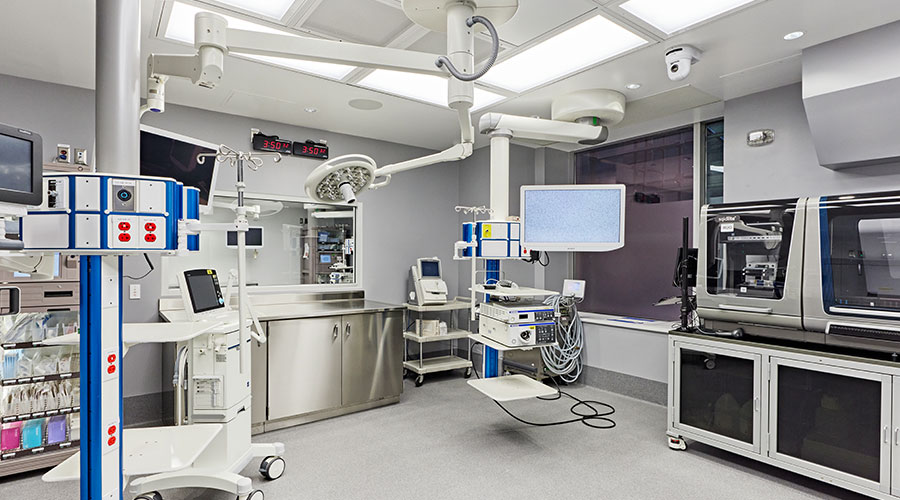According to the World Health Organization, health is a state of complete physical, mental and social wellbeing and not just the absence of disease or sickness. Considering a person’s health holistically is not only an important practice for medical professionals, but it is also critical to the work you are responsible for every day. From the chemicals chosen for cleaning and disinfection to the finishes selected for the walls, these choices have the power to impact the health and wellbeing of patients and complement the diligent work of doctors, nurses, and other medical staff in your facility.
Impact of design
Today, healthcare facilities are called to pay special attention to the design of their interior spaces and the overall brand experience of guests. First impressions garnered from a carefully considered design and a warm and inviting environment matter. Ultimately, these first impressions have the potential to bring comfort and security to all who enter your doors.
Similar to the hospitality and retail industries, consumers respond well to recognizable, professional, and consistent brands. Interestingly, a report from the Robert Wood Johnson Foundation, a philanthropic organization dedicated to healthcare, found a direct link between patient health and quality of care and the way a hospital is designed. It found that even small changes in design elements such as room layouts, wall color and flooring choices improved both patient and staff moods and physiological states contributing to their overall wellbeing.
Even relatively simple decisions like how much and what tone of light comes into a space can affect a patient’s circadian rhythm disrupting their sleep schedules, and hormone levels among various other effects. Or the impact of choosing a paint color that soothes or brings joy instead of feeling cold or sterile is thought to help with a patient’s overall mood and contribute to their healing.
Factors to consider
Maintaining a contemporary interior means keeping up with design trends and prioritizing updates to outdated spaces. While making updates, efficiency, and quality are two factors that cannot be sacrificed. To meet guests’ elevated expectations, it is critical to maintain efficient operations and a high-quality design aesthetic, while also considering the health and safety of all who enter your building. Through smart design choices, healthcare facilities can be stylish, productive, and inviting spaces while also addressing the health and safety of patients and guests.
Large-scale renovations can not only be costly but can also lead to patient discomfort. Suddenly, walkways become tripping hazards, a cacophony of banging and construction noises fill the rooms of patients needing rest, and dust circulates through the air jeopardizing guest safety and increasing the odds of infection. With so many factors to account for, planning for a renovation can feel overwhelming – but it doesn’t have to be.
When making any updates to your facility, keeping disruption levels, and your return on investment in mind is key. After a renovation, your brand image should be stronger than ever. But before lifting a hammer, think about how a renovation will potentially disrupt your patients and your business as this can also have an impact on your brand image. Clearly understanding how a renovation benefits guests and your bottom line is also a key factor in determining if your renovation will give your brand the boost it needs.
Transforming vs. replacing
Fortunately, there are ways to update and refresh a space without wreaking havoc on your patients, facility, and business. By recognizing opportunities in every space and repurposing existing surfaces with architectural and glass finishes, you can improve aesthetics, maximize time savings, and support sustainability initiatives.
Transforming your facility with aesthetic finishes for each surface rather than undergoing a total replacement can save your team time and effort while bringing a new design vision to life. Using adhesive finishes and solutions can reduce or even eliminate disruptions and downtime allowing you to maintain your operations without patient upheaval. Almost all surfaces, from walls to cabinets, doors, and even glass can be reimagined and given a new look virtually overnight. By resurfacing existing assets like nursing stations, patient room doors, and window coverings, healthcare facilities can achieve an updated, functional look in less time and with less cost and guest disruption.
Long-lasting solutions
While it can be difficult when seemingly permanent architectural and design decisions were made to your facility years ago, there are ways to tweak them now to positively impact your patients and guests in the future.
Looking for a place to start? Consider the following ways to transform your space:
• In place of hard to launder curtains or blinds, consider adding decorative window films to make not only an immediate aesthetic impact but also control the amount of light and privacy a space has.
• For walls, cabinets, and other hard surfaces, consider utilizing architectural finishes or graphic films to transform not only the look and feel of a space but also create easier surfaces for your teams to clean and disinfect.
• For added wayfinding measures and messaging opportunities, consider installing graphic films on floors and doors where guests travel most frequently.
A sustainable alternative
When thinking about healthy design, sustainability is certainly top-of-mind at many healthcare institutions. Not only is resurfacing existing assets a cost and time-saving measure compared to a comprehensive replacement, but it can also help you to achieve LEED credits and minimize your impact on the environment at the same time.
Updating and refreshing your space without a headache is possible. Each space poses opportunities to repurpose existing surfaces and consider healthy design choices. Not only can you improve the aesthetics of your space, but also the health and safety of all who enter it.
Ben Oberle, Healthcare & Education Marketing Manager at 3M Commercial Solutions Division.

 8 Operational Considerations for All-Electric Central Plants
8 Operational Considerations for All-Electric Central Plants Novant Health Breaks Ground on New Facilities in South Carolina
Novant Health Breaks Ground on New Facilities in South Carolina Building an Organ Regeneration Lab at UHN's Toronto General Hospital
Building an Organ Regeneration Lab at UHN's Toronto General Hospital Oracle Health Hit by Data Breach, Patient Data Possibly Compromised
Oracle Health Hit by Data Breach, Patient Data Possibly Compromised Ground Broken on New MD Anderson Sugar Land Facility
Ground Broken on New MD Anderson Sugar Land Facility